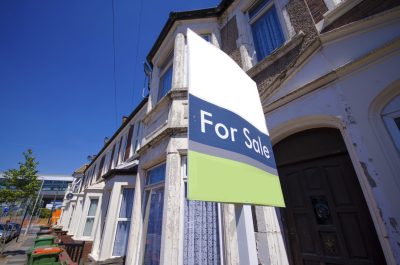
Did The Property Market Forecasts Get It Right?
Some early 2022 property market forecasts have stood the test of time better than others.
At the start of the year, anybody making a spread bet on the UK having five housing ministers, three prime ministers, and two monarchs during 2022 would have been considered a fool.
But the year we should have spent happily congratulating ourselves for limping through the pandemic — and moving on to better things — has lurched from one crisis to another.
The sheer improbability of much of what has gone on has made the job of property market forecasts on the future of the housing market especially challenging.
What 2022 proves, beyond doubt, is that all property market forecasts need to be taken with a strong pinch of salt — remember how the Bank of England warned house prices could fall by a terrifying 16 per cent in the pandemic? When, in reality, they jumped by almost 10 per cent in 2021 alone.
The bottom line is that nobody can tell you what the property market is going to do during 2023 with any degree of certainty.
Saying that, some experts’ predictions for 2022 stood the test of time better than others:
From pedal to the metal to national slowdown
Back in January 2022, the RICS Residential Market Survey, based on a poll of estate agents, was optimistically reporting increasing buyer demand and a shortage of stock. Agents expected both prices and sales numbers to increase over spring – and they were right.
The housing market roared into 2022, only for demand to start melting away during the boiling hot summer.
Since then, a toxic combination of political maelstrom, the mini budget, rising interest rates, and the cost-of-living crisis has put the market into reverse, down by more than two per cent between October and November, according to the latest Halifax House Price Index. This is the biggest monthly fall since 2008.
Buoyed by the strong start to the year prices are, currently, ahead of where they were at the same time last year — by a well-below-inflationary 4.7 per cent.
Buyers back in the driving seat
January saw the liveliest start of the year ever in terms of new buyers registering and vendors requesting house valuations, according to Rightmove’s first House Price Index of 2022.
An ongoing shortage of stock meant it was very much a sellers’ market.
But Tim Bannister, Rightmove’s director of property data, had high hopes that more homes would start coming onto the market during the year, giving buyers more choice.
While Bannister was right about a modest supply increase in 2022, what he did not foresee was demand collapsing over the autumn. Many buyers pressed pause on buying plans, hoping for a calmer market in 2023, creating a buyers’ market and forcing sellers to become a lot more realistic about prices.
The average asking price in London back in January was £627,286, according to Rightmove, up 4.2 per cent over the previous year.
By December, the average asking price had inched up to £666,507 but was down 2.3 per cent on November’s level.
Price falls approaching Christmas are normal, said Bannister, exacerbated by the current cost-of-living crisis.
The affordability gap
Nationwide reported the same strong start to the year as all the other forecasters, but its chief economist, Robert Gardner, was warning back in January that it was likely that the housing market would slow in 2022.
“House price growth has outstripped earnings growth by a wide margin since the pandemic struck and, as a result, housing affordability has become less favourable,” he said.
With typical mortgage rates jumping from just over three per cent to just over six per cent this year, that affordability gap is now a yawning chasm.
In November, Gardner warned that 2023 will be another tricky year for the market, with the likelihood of further interest rate rises to stem inflation. “The outlook is uncertain, and much will depend on how the broader economy performs, but a relatively soft landing is still possible,” he said.
Andrew Asaam, mortgage director at Lloyds Banking Group, also called a market slowdown early. In January, he warned that higher energy bills and interest-rate rises would mean “much flatter” price growth in 202 although, as it turned out, he was overly cautious, with one per cent growth forecast.
Estate agents Savills (which had forecast two per cent growth in London in 2022) and Hamptons (which forecast 3.5 per cent growth nationwide), were both closer to the mark
Changing fortunes
Major estate agents have been busy redoing their long-term property price forecasts over the past couple of months.
Going into 2022, Savills was predicting growth of 1.5 per cent in London in 2023. After the events of this year, it has radically revised that to predict a drop of 12.5 per cent.
Knight Frank has made similarly dismal downgrades to its long-term forecasts.
At the start of this year, it said greater London could expect three per cent price growth in 2023 (and up to six per cent in prime central London).
It is now suggesting prices will plunge six per cent next year across the capital (and another four per cent in 2024).
For those looking for a drop of good news, both firms believe the downturn will be short-lived, with price growth returning in 2025.


If you have any comments, please email the author of this article and click on the link above